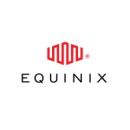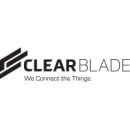Cloud computing has been a boon for businesses, but something called multi-access edge computing, sometimes referred to as mobile edge computing, might be even better.
What Is Mobile Edge Computing?
Mobile edge computing (MEC) is a network architecture that allows for cloud computing at the edge of any network, cellular or non. And tapping into the edge of a network helps companies handle the massive onslaught of data that’s constantly being relayed from connected devices by physically processing that data closer to the original source.
From a technological standpoint, traditional cloud computing is at something of an impasse. With a predicted 30.9 billion IoT devices on earth by 2025, it’s having trouble keeping up.
But MECs keep in constant contact with IoT devices and relay crucial data onto a cloud, ensuring faster speeds and higher-quality data. Other advantages include lower latency, quicker data offloading times and a greater ability to handle more access points.
Mobile Edge Computing Examples
- Akamai
- ClearBlade
- Adapdix
- Saguna
- Azion
- Phizzle
- Rigado
- Johnson Controls
As an intermediary between the cloud and connected devices, MEC is destined to have an enormous impact.
Here are 15 edge computing companies that deliver data in flexible ways.
15 Mobile Edge Computing Examples
Location: Cork, Ireland and Lexington, Kentucky
Acquired by Johnson Controls in 2022, FogHorn Systems’ edge intelligence software is used for Industrial IoT (IIoT). Sectors ranging from oil and gas to smart buildings and manufacturing all have used FogHorn’s intelligence platform to gather real-time equipment insights and reduce processing and storage costs by 100 to 1000 times the original.
Location: Norcross, Georgia
ADVA provides network equipment for improved data connectivity and storage, some of which are created specifically for MEC capabilities. The company’s FSP 150 hardware series and Ensemble software suite both utilize edge infrastructure technology to increase bandwidth and automate security for communication service providers.
Location: Redwood City, California
Equinix’s Network Edge is a virtual network combining services for MEC enhancement and reducing hardware requirements. The network is built to be implemented onto existing modular infrastructures and integrate with other interconnected network services. With deployment, Equinix’s network services include multi-cloud networking, data center migration and SD-WAN extensions with choices from multiple different vendors.
Location: Cambridge, Massachusetts
Akamai provides cybersecurity-based cloud services, including for edge computing. The company’s Intelligent Edge Platform uses cybersecurity protocols that protect all parties in the edge computing infrastructure. Akamai’s platform is used by 250,000 edge servers that ingest a total of 2.5 exabytes of data a year from 1.3 billion connected devices.
And it’s trusted by many of the biggest global brands, including IBM, Siemens, Airbnb, the NBA, Adobe and MailChimp.
Location: Austin, Texas
ClearBlade’s edge computing software lets businesses securely run and scale IoT devices in real-time. The company’s IoT platform is the only platform that lets companies synchronize, manage and deploy IoT systems with one common stack so developers can build in the cloud and push to the edge.
ClearBlade and computing giant AMD teamed up to offer an edge-to-cloud computing platform that creates transparency and lowers costs in the supply chain.
Location: Pleasanton, California
Acquired by Adapdix in 2021, Edge Intelligence is an analytics platform for mobile edge computing. The software processes data in real-time to give enterprises insights into geographically distributed edge data from devices like routers, network servers and even threat intelligence platforms.
Adapdix uses Edge Intelligence’s platform to serve the technology, industrial manufacturing, government and logistics industries by piecing together real-time data for protocols.
Location: Yokne’am Illit, Israel and Atlanta, Georgia
Saguna provides MEC for mobile operators and enterprises. The Saguna Edge Cloud creates edge-cloud-computing environments inside the access network that let 5G features function over existing 4G settings. Additionally, the company’s Multi-Access Edge Computing for enterprises helps a variety of businesses implement edge data processing tools for the growing number of IoT devices in use.
Research laboratory 5TONIC and ASTI Mobile Robotics collaborated using Saguna’s MEC platform to run autonomous vehicles on a 5G network. By computing connected device data on the edge, the companies aim to teach autonomous vehicles the most efficient routes and how to avoid objects.
Location: Palo Alto, California
Azion helps businesses build scalable and secure server-less applications at the edge. The company’s edge products connect to any cloud services and facilitate app building that decreases latency times for everything from content downloading to personalized security building.
Azion operates more than 100 edge network data centers across South and North America, Europe, Asia and Oceania.
Location: San Francisco, California
Phizzle builds MEC solutions for companies that want to get more out of their marketing data. Phizzle employs edge computing to help organizations combine their business intelligence and machine learning to improve everything from SMS marketing to social data visualization.
The Charlotte Hornets NBA team uses Phizzle’s edge computing to consolidate records and data for the team’s millions of fans. The company’s MEC helps the Hornets eliminate duplicate records and provides real-time data for its marketing team.
Location: Portland, Oregon
Rigado creates IoT data solutions for smart, connected environments. One of the company’s products, the Cascade-500 IoT Gateway, provides edge connectivity to sensors, devices and the cloud. With a wide range of connectivity options (including Cellular LTE), Rigado can relay smart building information to the cloud with lower latency.
Rigado products utilize AWS IoT Greengrass and AWS IoT Core technology to provide real-time analytics and heightened data security.
Location: Austin, Texas
Vapor IO uses colocation facilities to bring cloud-like services to the edge of wireless networks. The company’s data center facilities are located at the base of cell phone towers, making it possible to place IT equipment as close to the user (and as close to the edge of a cellular network) as possible.
In 2022, Vapor IO and Hypersive agreed to collaborate to deploy Vapor IO Kinetic Grids with included security services across six U.S. cities.
Location: Austin, Texas
EdgeConneX delivers edge infrastructure solutions via purposefully located data centers that help mobile networks bring services, data, content and applications closer to the edge for better streaming and speed. Additionally, EdgeConneX MEC infrastructure is used to power virtual reality platforms and test 5G networks.
Since 2013, EdgeConneX has built over 40 edge computing data centers across North America, Europe and South America.
Location: North Sydney, Australia and Boulder, Colorado
Looking to help “edge-ify” existing client apps, Section provides cloud-native hosting solutions for development and operations engineers. The company’s Section Edge Platform allows users to deploy applications across multiple edge clusters and optimize edge delivery networks. Section’s platform also allows the customization of network locations, meaning clusters can be globally distributed across a combination of AWS, Azure and more infrastructures.
Location: Denver, Colorado
Mutable’s public edge cloud platform is able to be deployed across multiple server locations to turn them into their own micro-data centers. Built on Linux-based operating system NixOS, the Mutable Cloud Platform allows for adaptive edge network configuration and automated server operations. The platform system also provides a singular Kubernetes edge cluster environment where developers can run applications.
Location: Rueil-Malmaison, Paris, France and Andover, Massachusetts
Known for providing energy resource solutions, Schneider Electric also provides hardware and architectures for facilitating MEC capabilities. Preconfigured micro data centers, rack systems and cloud-based DCIM systems are all available for Schneider Electric to deploy. Such hardware can be also used as a brand new infrastructure or as an extension of existing infrastructure.



















